Australian Great White Sharks by Don Silcock

The Australian Great White Shark
By Don Silcock
Australia is a country seemingly full of all sorts of dangerous creatures, both on land and below the surface, but few inspire the tremendous fear and loathing in our great brown land down under that the Great White Shark does.
Referred to locally as White Pointers, that intense reaction has developed because when a Great White does attack a swimmer, surfer, spear-fisher or a diver the result can be horrendous and result in a gruesome death for the victim – so the fear side of the equation is very easy to understand!
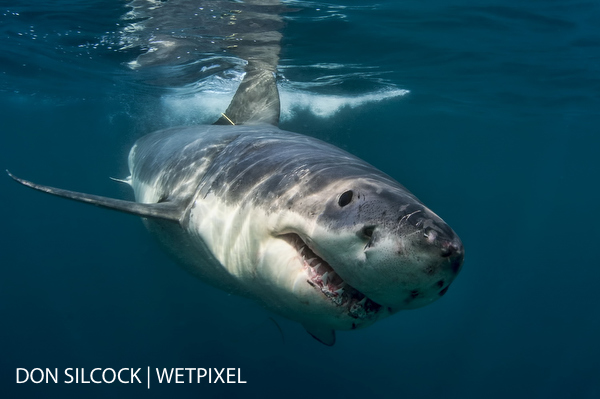
However, the loathing part is much more nuanced and largely results from the way the Australian tabloid media treat these attacks, which are almost guaranteed to make the front page and lead the nightly “news” on television.
The thing is that a shark attack provides an instant boost in circulation while a horrific one, where a death is involved, produces a huge spike in ratings. Compare the report by Australia’s Sydney tabloid the Daily Telegraph on the tragic loss of Japanese surfer Tadashi Nakahara with that of the equally tragic death of Mac Schulz) to see what I mean…
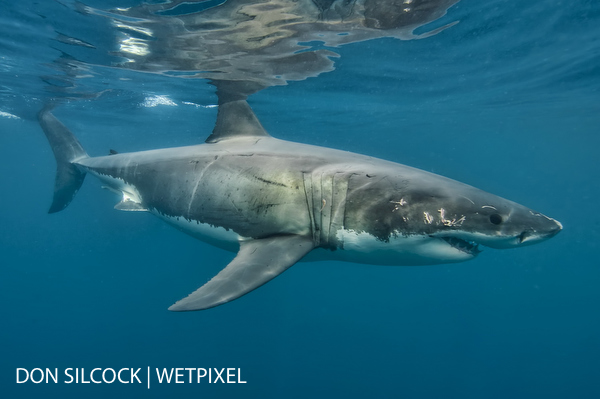
The movie Jaws was largely responsible for establishing the bad reputation, but the sensationalist treatment of shark attacks by the news media, combined with the many television “documentaries” made about them (which usually aim to scare rather than educate the viewer), has firmly entrenched the overall perception.
The reality however is significantly different and the Australian Shark Attack File data compiled by Sydney’s Taronga Zoo provides a much clearer picture. 2015 was a “bad year” with 22 confirmed cases of unprovoked shark attacks in Australia,compared to 11 such encounters in 2014 and significantly above the decadal average of 13. Of those 22 attacks in 2015, 1 was fatal and 14 resulted in injuries – 10 of which were classified as “severe”, meaning the victim was bitten.
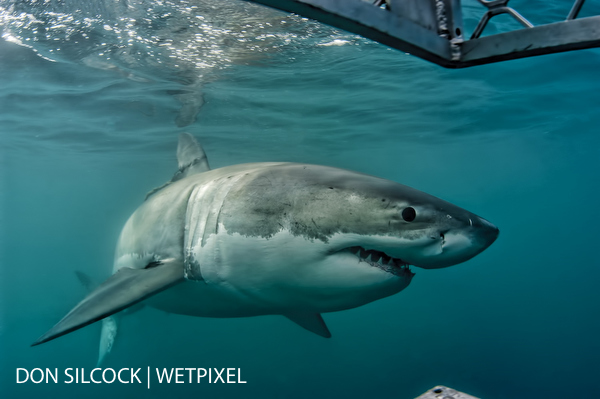
To put those numbers in perspective on average 8 rock fishermen drown and 23 scuba-divers die each year in Australia. So, given the approximately 100m “visitations” that Surf Life Saving Australia estimate take place in our waters each year by swimmers, surfers and divers - the reality is that the risk of being a victim of a shark attack is well over 50m to 1…Even then, the chances of being attacked by a Great White are even more remote as the data from Taronga Zoo indicates that most attacks are from Bull Sharks – but data like that does not sell newspapers or make the evening news!
Australian Cage Diving
All that said, there is however little doubt that Great Whites are superbly evolved creatures that sit at the very top of the marine food chain as the “apex predator”and to fully appreciate that you really need to see them underwater for yourself.
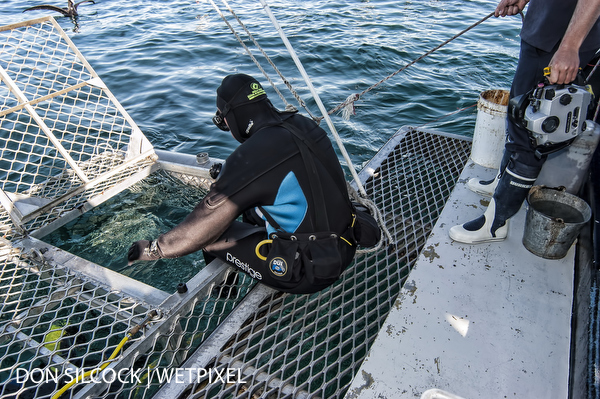
Australia is one of only three locations globally where cage diving with Great Whites is conducted on a regular basis – the other two are at Gansbaai, near Cape Town in South Africa and the remote volcanic island of Guadalupe located about 240km off the west coast of Mexico’s Baja Peninsula.
In Australia, Great White Sharks are found from Central Queensland on the east coast, all the way round the bottom of the continent up to the northern parts of Western Australia, however it is the state of South Australia that is best known for them and it is also the only location in the country that allows cage diving.
Pioneered by Aussie diving legends and film-makers Ron and Valerie Taylor, along with famous Great White Shark attack survivor Rodney Fox, cage diving is the closest you can possibly get to seeing these incredible creatures in their natural environment.
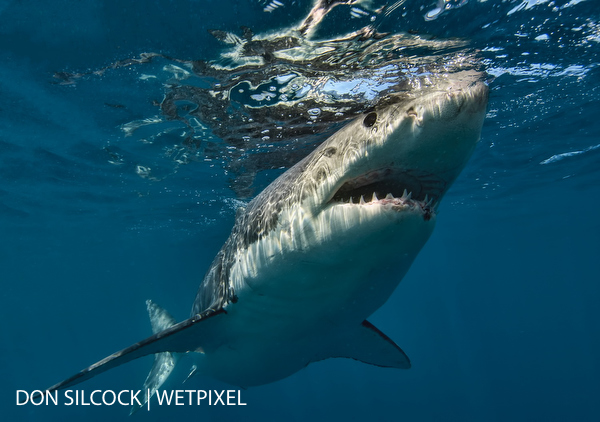
In South Australia cage diving is only permitted at the Neptune Islands, a group of 4 small Islands located some 20 miles south-east of the Eyre Peninsula and about half-way to Kangaroo Island in the Great Australian Bight (ght, not te…) - the huge open bay that covers most of the southern coastline of the Australian continent.
Great Whites are found in significant numbers at the Neptune Islands because of the island’s colony of New Zealand Fur Seals, which is the largest in Australia and provides an abundant supply of exactly the sort of high-fat food the sharks prefer.
Large male Great White Sharks can be seen all-year round at the Neptune’s but it is from April through to August when the seal pups born around the start of the year begin leaving the safety of land to feed for themselves, that the much larger female sharks are to be found there.

The town of Port Lincoln in the Spencer Gulf is the operating base for the cage diving operators. It is also the tuna fishing capital of Australia and one of the wealthiest places in the country, as a drive around the Lincoln Cove Marina will show you!
Port Lincoln is a short 50-minute flight from South Australia’s capital Adelaide and is well-served by both Qantas and the regional airline REX.
Cage Diving Technique
The technique used in South Australia is a combination of tricks and lessons learned used to do two things – attract the sharks to the boat and then keep them there.
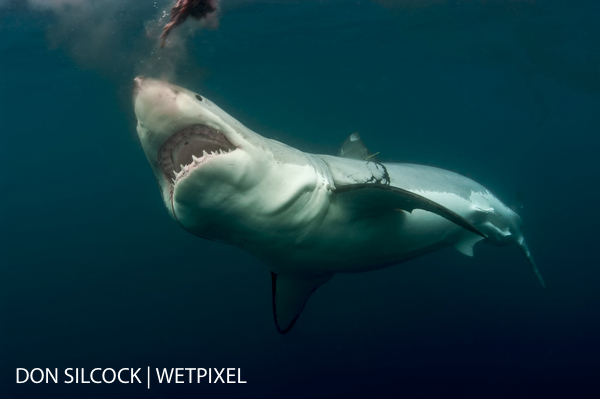
Conditioned as we generally are in to viewing the Great White Shark as some kind of robotic killing machine able to detect and home in on the smallest drop of blood from a great distance, it comes as quite a surprise to realize that they are actually extremely cautious animals and have to be drawn to the cage.
The first step in that process is catching the attention of any sharks in the general area with a tuna oil “power slick”. Small plastic bags filled with the oil are pin-pricked and suspended over each side of the boat to just float on the surface so the oil can slowly leak out and form a surface slick that is carried downstream with the prevailing current. The slick is generally very effective at bringing the sharks towards the boat, but to get them close to the cage requires liberal doses of a special burley brew poured into the water at the back of the boat.

This gruesome concoction is a mixture of minced tuna gills, lips and tuna blood, which looks and smells absolutely awful, but is virtually guaranteed to excite the sharks. Finally, large chunks of tuna suspended on floats behind the boat are used lure the sharks towards the cage so they can be viewed more closely and photographed.
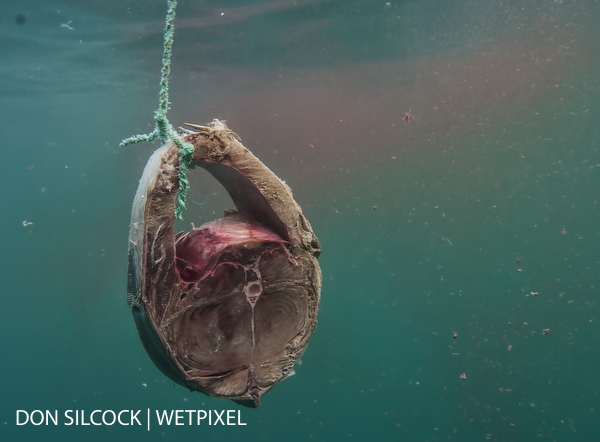
In The Cage
…I can tell you from personal experience that the first time in the shark cage is a pretty intense moment… Thoughts of what could go wrong fill your head as you desperately try not to make a fool of yourself but the reality is that it is all very safe – there is just no way the Australian authorities would allow you in there if it wasn’t!
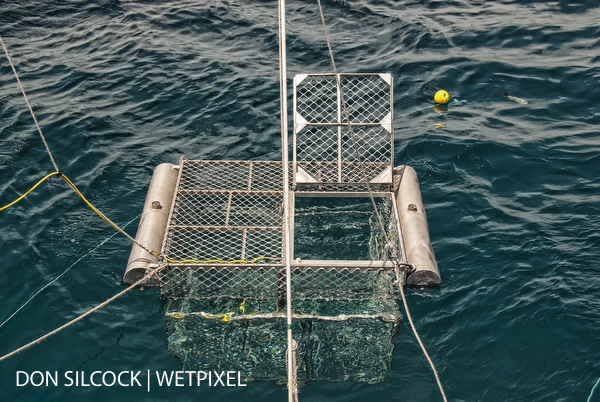
The actual cage consists of two large sealed stainless steel tubes to provide flotation and an attached box, big enough for four large people, made from the aluminium mesh normally used for the security screens found on house windows.
There are two open viewing areas, one at head height and the other at knee height, which are big enough to poke your camera through, but small enough to prevent an aggressive shark from entering.
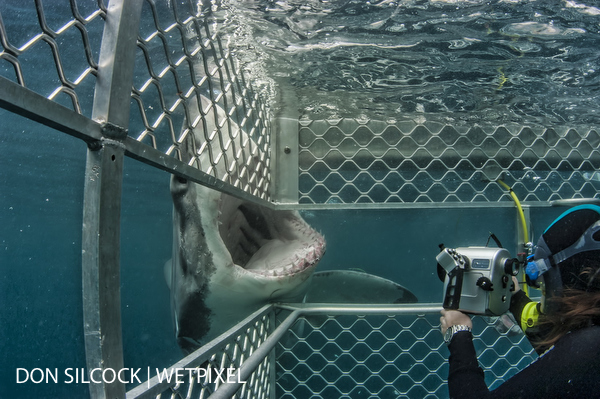
Before you enter the cage, you must be heavily weighted so you do not float around in it…and either a special weight harness, or multiple weight belts, are used. The harness tends to concentrate the effect of the heavy weights on your shoulders and quickly becomes uncomfortable, so I personally opt for the multiple weight belts.
If there is any real danger associated with cage diving it is wearing those excessive weights while entering and exiting the cage because if you slipped and fell into the water you would sink like a stone! The cage is fitted with hookah regulators supplied from the boat so that the available space is maximized and scuba tanks are only used if the cage it is to be lowered below the surface.
It has to be said that, in all but the calmest seas, actually being in the cage is not exactly the most comfortable of experiences as you tend to be buffeted around as it bobs around on the surface of the water. Add to that the cold temperatures and the burley in the water (which you can taste through the regulator) and you get the picture… but all that discomfort simply evaporates when the sharks come in to the cage!
The Experience
Simply stated, being in the water (albeit from the safety of the cage) with a Great White Shark is one of the most exciting big animal adventures I think you can have. Seeing these magnificent creatures underwater is without doubt the best way to fully appreciate how much they have mastered their environment and truly are the “apex predator”. Their two-tone coloration makes them very difficult to see when viewed either from above or below, but when you see them close up when they approach the cage the sheer brute force they possess is incredible.
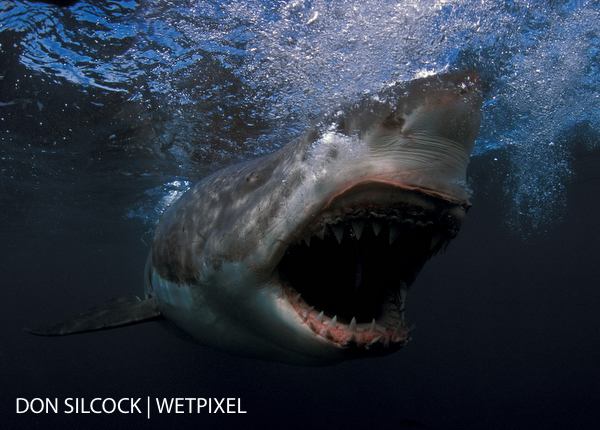
They seem to move through the water as if self-propelled, almost like a submarine, but when alarmed or excited a flick of their powerful tail thrusts the large streamlined body forward at quite amazing speed.
The older and larger sharks are very cautious and often have to drawn to the cage with the tuna baits, but the younger ones are much more aggressive and will regularly sneak up from below – which is why you are repeatedly told not to put your elbows through the viewing area!
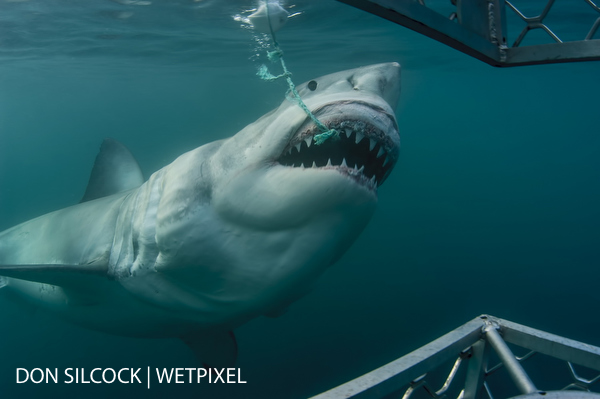
Probably the most exciting encounter you can have while in the cage is when a shark decides to take a tuna bait and one of the crew on the back deck is able to wrangle the bait towards the cage. The shark will have switched in to full attack mode with its upper and lower jaws extended outwards to seize the bait and, if the wrangling is good, it’s coming right at you!
Sometimes the shark will be too quick and will seize the bait, but occasionally the wrangler manages to pull the bait out of the water so you get the shark without it and that is about as close as you can possibly be and still live to tell the tale….
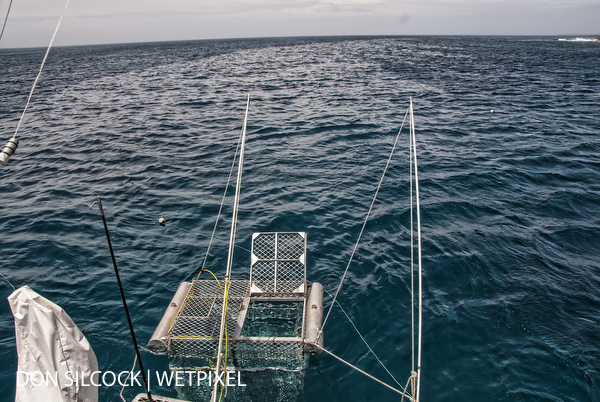
Cage Diving Operators
There are two main Great White Shark cage diving operators to choose from in South Australia and both have excellent reputations, but are focused on quite different market segments.
Rodney Fox Expeditions:
I have never met Rodney Fox, but I have read so much about him that I feel like I have…Rodney is famous for narrowly surviving a savage mauling by a Great White Shark off Adlinga Beach, south of Adelaide, in 1963 whilst competing in a spear fishing competition. The story of the attack and how he survived is both spine chilling and miraculous, but add in the fact that Rodney was back in the water spear fishing just three months later, going on to become an Australian champion the following year, is nothing short of incredible.
Rodney was one of the pioneers of cage diving with Great White Sharks and has probably done more than any other individual to educate people about them and the need for their conservation. He now runs his expeditions from Port Lincoln with his son Andrew Fox aboard their boat the Princess II. Unlike other Great White Shark trips, where the shark cage floats on the surface and hookah breathing systems are used, Rodney & Andrew Fox offer an option called “Ocean Floor Diving” whereby the scuba is used and the cage is lowered to the bottom.
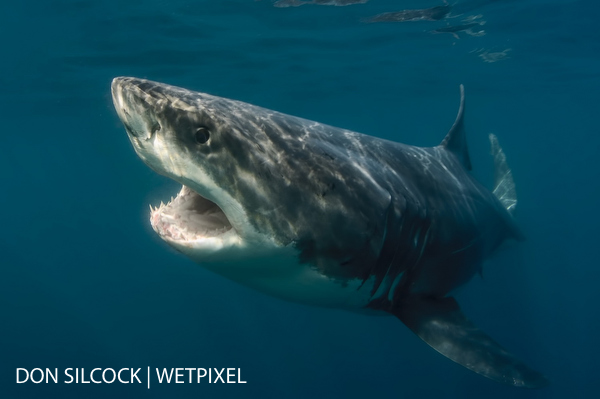
Calypso Star Charters:
Originally started by Rolf Czabayski –a “poacher turned gamekeeper” who used to hunt Great Whites as a champion big game fisherman, but had a change of heart and became truly passionate about the conservation of these unique animals. Rolf retired in some years ago, selling the business to a Port Lincoln consortium including Andrew Wright who had started on the Calypso Star as a deckhand and is now both the general manager of the business and the captain.
Andrew is a great guy and a terrific shark wrangler who helped me get my best Great White images! Since the change in ownership the focus has moved to one day charters with a much larger number of people on board.
Don Silcock
For more information and insight on these incredible creatures check out Don’s Complete Guide to the Australian Great White Shark.
Don’s website www.indopacificimages.com has extensive location guides, articles and images on some of the best diving locations in the Indo-Pacific region.